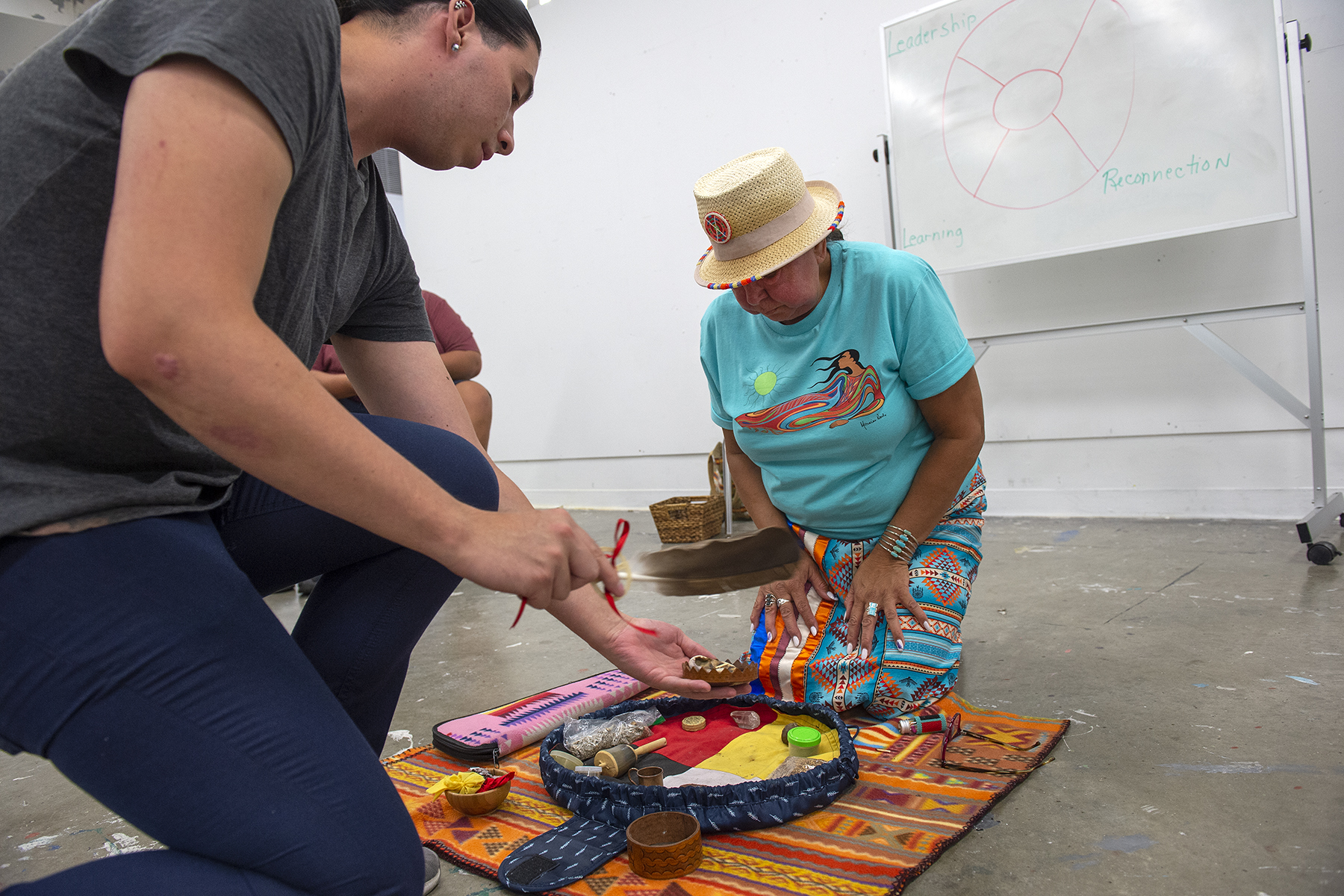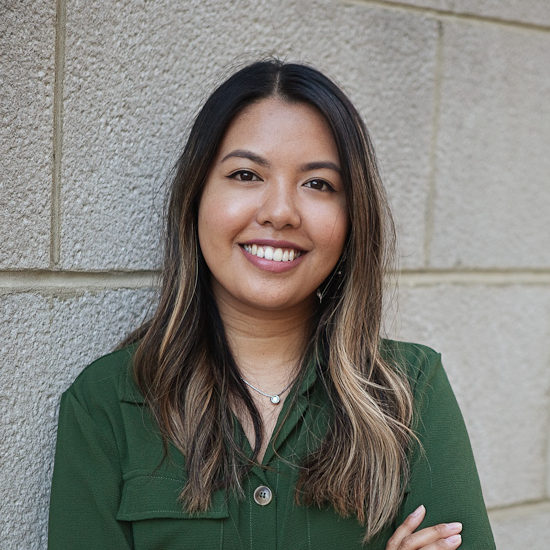Image provided by Fanshawe College – students learn traditional teachings and participate in ceremonies as part of the summer college and high school accelerator programs.
One of the many impacts of COVID-19 was to bring to light longstanding economic inequalities exacerbated over the past months. As Canada looks ahead to pandemic recovery, we must do so with a renewed focus on Indigenous reconciliation.
Over the past year, I connected with Indigenous program leads and support staff across our membership to learn about their priorities for supporting Indigenous student success, initiatives for Indigenous inclusion and ways in which we, as a national association, can highlight the work underway.
Since February, the unemployment rate among Indigenous people increased to nearly 17 per cent compared to 11 per cent among the non-Indigenous population. Beyond unequal labour market outcomes, Indigenous communities face issues related to racism, social exclusion, food insecurity and more – all interconnected with education.
Today, education has become a crucial way to support the economic and social wellbeing of First Nations, Métis and Inuit communities.
Institutions are redefining access to and success in post-secondary education by prioritizing Indigenous culture – illustrating a level of commitment and breadth of approaches that will also be key to inclusive recovery.
To learn more about ongoing and future efforts to implement the Truth and Reconciliation Commission’s Calls to Action, I found a series of holistic measures and long-term commitments to advance reconciliation in the education system.
Polytechnics are embedding reconciliation in institutional frameworks, providing cultural supports for Indigenous students and creating Indigenous-focused pathways to post-secondary education. On campus and within Indigenous communities, polytechnics are providing connections to Indigenous history and culture, building community partnerships and incorporating Indigenous-centered content in teaching and learning.
Polytechnics are taking proactive leadership roles to support and empower Indigenous students by creating inclusive and welcoming post-secondary experiences. At the Southern Alberta Institute of Technology, the Indigenous Learner Success Strategy is designed to meet Indigenous learners’ emotional, mental, spiritual and physical needs. It focuses on four strategic priorities: access, success, awareness and community engagement.
Ensuring Indigenous learners have access to culturally relevant and timely supports is critical to helping students navigate success and wellbeing. KPU’s Indigenous Services guide students to the supports and services that address their unique needs and circumstances – ensuring students are given the right care, in the right place, at the right time.
The presence of Indigenous role models also empowers students to see themselves reflected in positions of leadership and achieve their goals. Saskatchewan Polytechnic designed an Indigenous Activity Book for elementary and secondary students to encourage Indigenous students to achieve their education and career goals. The activity book celebrates success stories from the institution’s Indigenous students to inspire and share various career paths with prospective students.
To support the transition to post-secondary education, Fanshawe College’s Institute of Indigenous Learning launched college and high school accelerator programs as part of their commitment to support Indigenous student success.
Equally important is creating a built environment where Indigenous learners can see their identity, culture and language reflected in the spaces around them. Polytechnics are transforming campus infrastructure to reflect Indigenous culture throughout their spaces, placing institutions in the context of the history of Indigenous peoples.
Algonquin College’s DARE District and Indigenous spaces actively embed Indigenous knowledge and ways of knowing within the institution. Safe spaces for the Indigenous community to share and learn have become an important part of the institution’s character, while also teaching non-Indigenous students and faculty about the history and culture of Canada’s first peoples.
The reality remains that many Indigenous students must leave their communities to attend a post-secondary program. Several polytechnics have launched programs that can be delivered within remote Indigenous communities. The Northern Alberta Institute of Technology’s Industry Solutions group provides flexible on-reserve training programs to First Nations, Métis and Inuit students designed to help students develop skills in high demand for community growth.
Further, polytechnics are incorporating Indigenous content in teaching and learning resources for faculty, staff and students. George Brown’s Indigenous Education and Services team delivers workshops designed to increase awareness of Indigenous culture among students and staff. This initiative seeks to create lasting awareness and understanding of Canada’s Indigenous population, encourage active participation and reinforce cultural respect.
In my conversations with members, it was clear institutions realize there remains much to learn and do on the path to reconciliation. However, the deep commitment to transforming post-secondary experiences for Indigenous learners provides an important model.
As Canada considers the path to pandemic recovery, it is worthwhile to reflect on the role higher education has played in Indigenous reconciliation to-date and how those lessons can be applied to the urgencies of a broader focus on inclusive recovery.
For more information about the reconciliation actions underway on Canada’s polytechnic campuses, see Supporting Indigenous Inclusion at Canada’s Polytechnics.

